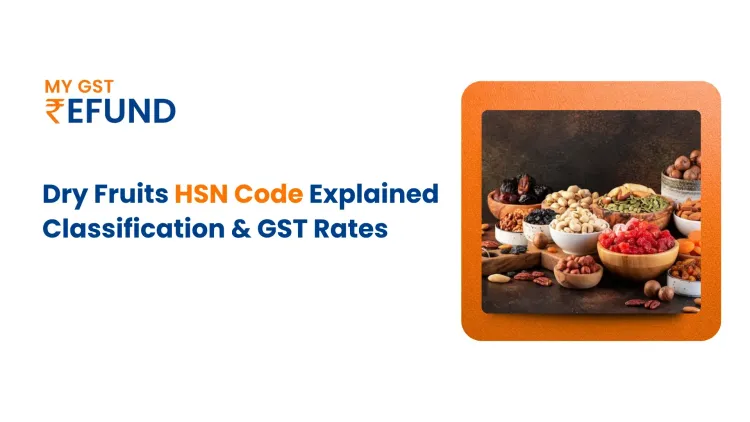Spice Export from India: Overview, Compliances, Restrictions & Future Trends
India is known as the “Land of spices”, famous for producing and exporting the most flavourful, aromatic, and medicinally powerful spices in the world.
India is now a global leader in spice production and export, supplying more than 100 countries and significantly influencing the world's spice trade.
This blog presents a holistic view of the spice export industry in India, with special reference to its strengths, export requirements, limitations, and future growth prospects.
Overview of Spice Export from India
India contributes nearly 48% of the world’s spice trade, exporting over 1.4 million metric tons of spices annually. The spice business is backed by a good network comprising farmers, processing units, testing laboratories, and export firms.
The main Spices Exported from India
Black Pepper: It has extensive use as a culinary or cooking seasoning and in medicine.
Turmeric: The world is aware of this herb due to its anti-inflammatory and antioxidant properties; India is the leading exporter.
Cardamom: Very popular in the Middle Eastern, European, and Asian markets.
Chilli: This is one of the largest export commodities that India has, particularly to Africa, the U.S, and the Middle East.
Coriander: Sold to most food industries in both seed and powdered versions.
Cumin: India is a strong source of cumin seeds in the world market.
Top Spice-Producing States in India
Madhya Pradesh, Rajasthan, Gujarat, Kerala, Karnataka, Andhra Pradesh, Telangana, Maharashtra, Tamil Nadu, Uttar Pradesh, Assam, and West Bengal.
Top Spice Export Destinations
- United States
- Middle East (UAE, Saudi Arabia, Iran)
- European Union
- Southeast Asia and African Countries.
These markets appreciate Indian spices due to their natural quality, taste profiles, as well as their medicinal values.
How MYGST Refund Helps You Claim GST Refunds
MYGST Refund is India’s #1 GST Refund Consultant, helping exporters receive their export GST Refunds quickly and hassle-free. With a No-Success, No-Fee policy, we ensure you get your rightful refund without any risk.
Want to claim your Export GST Refund? Get started with MYGST Refund today!
Compliance for Spice Export from India
In order to successfully export spices, companies have to deal with stringent domestic and international regulations that guarantee the safety and quality of the packaging of their products and their authenticity.
A. India has some of the important regulatory authorities.
Spices Board of India: Controls, publicizes, and certifies spices to be exported.
DGFT (Directorate General of Foreign Trade): It issues the Import Export Code (IEC), which is needed for exports.
FSSAI: Maintains safety and hygiene standards in food.
APEDA: Encourages exportation of agricultural and processed foodstuffs, including spices.
B. Export Certifications.
A large number of foreign markets require advanced certifications. These may include:
Food safety management standards: ISO 22000.
HACCP: It avoids contamination throughout manufacturing.
Global GAP: Secures safe and sustainable agricultural activities.
Organic Certification: In case of USDA, EU, or India Organic exports.
Halal and Kosher Certification: Must have in the religious markets.
C. Packaging & Labelling Regulations.
The spices that are being exported should be well packaged to keep their quality fresh, and their packaging should be such that it does not cause contamination. Packaging must include:
- Product name
- Country of origin
- Batch number
- Net weight
- Manufacturing/Expiry dates
- Certifications (e.g., Organic, Fair Trade)
- Storage instructions
D. Quality Control Requirement.
Within the Indian exporters, spices are required to be of an international standard in terms of residue and contamination. It is necessary that regular lab testing be done on:
- Aflatoxins
- Pesticide residue
- Microbial contamination
- Heavy metals
By keeping the standards of quality, it is possible to be accepted in the markets that have strict rules, such as the U.S. and the EU.
3. India has placed restrictions on the export of spices.
Despite the free export of most of the spices in India, there are some restrictions, which are aimed at ensuring domestic availability, as well as international standards of safety.
A. Pesticide Residues Compliance
Others, such as the EU and the U.S, set stringent pesticide residue limits. MRL (Maximum Residue Limits) are mandatory requirements that exporters would comply with to prevent rejection of the shipment.
B. Temporary Export Bans
The government can temporarily limit exports due to shortages of supply or price fluctuations. These may affect spices like:
- Onion
- Coriander
- Turmeric (rare cases)
C. Labelling Regulations
There must be strict adherence to country-specific demands, such as EU food labelling or USDA packaging standards of organic products.
D.Health & Safety Standards
The importing countries can impose a ban or return products that are contaminated with aflatoxins, salmonella, or heavy metals.
Spice Exports: Future of India.
The future of India's spice exports is extremely good owing to:
A. Increasing the demand for Natural, Organic, and Functional foods.
Consumers worldwide prefer:
- Clean-label products
- Chemical-free spices
- Organic-certified spices
- Healthy spices (e.g., turmeric supplements)
- This trend offers high-value exportations.
B. Sustainability and Traceability.
Global buyers now require:
- Environmentally-friendly farm management.
- Transparent supply chains
- Pollution-free quality control.
India is modernizing their production and processing methods in order to match these expectations.
C. Growth E-commerce.
Online shop platforms and small online stores allow small exporters to sell directly to international clients.
D. Growth of Value-Added Spice Products.
Product diversification is being done by exporters:
- Ready-to-use spice mixes
- Organic spice powders
- Health supplements with spices.
- Gourmet spice blends
These products have high margins in the overseas market.
E. New Trade Agreements
India is seeking FTAs with countries such as:
- European Union
- United States
- UAE & GCC Nations
Such contracts will minimize the tariffs and increase the market reach for spice exporters.
F. Technological Improvements
Modern technology in:
- Dehydration
- Cold storage
- Steam sterilization
- Packaging
Improves quality and shelf life, and assists the Indian exporters to compete in the international market.
Documents Needed for Spices Export From India
You need to have the following documents to export spices from India,
- IEC (Importer Exporter Code)
- Company PAN
- MSME Registration
- RCMC from Spices Board
- FSSAI License
- Trademark Registration
- Authorized Dealer (AD) Code
- Bank Statement
- Phytosanitary Certificate
- Packing List & Commercial Invoice
Conclusion
The spice export business of India is one of the best export business opportunities in the world due to its high demand and established production capacity, with the support of the government. The secret of success is to be of high quality, to observe compliance standards, and to explore the new-age export routes.
The fact that the market of organic, value-added, and sustainably produced spices is growing and has great potential is extraordinary, regardless of whether you are a new or an experienced exporter.
Frequently Asked Questions
1. Is there any limitation on the exportation of spices in India?
The majority of spices can be an unrestricted export unless there are limitations imposed at certain times during local shortages, high pesticide residue levels, or temporary government regulations.
2. Does the spices export business pay off?
Yes. Spice export has a high potential and is a highly lucrative business in the face of a world that is in high demand, product diversification, as well as the increasing popularity of Indian spices as a health and cooking ingredient.
Related Posts






